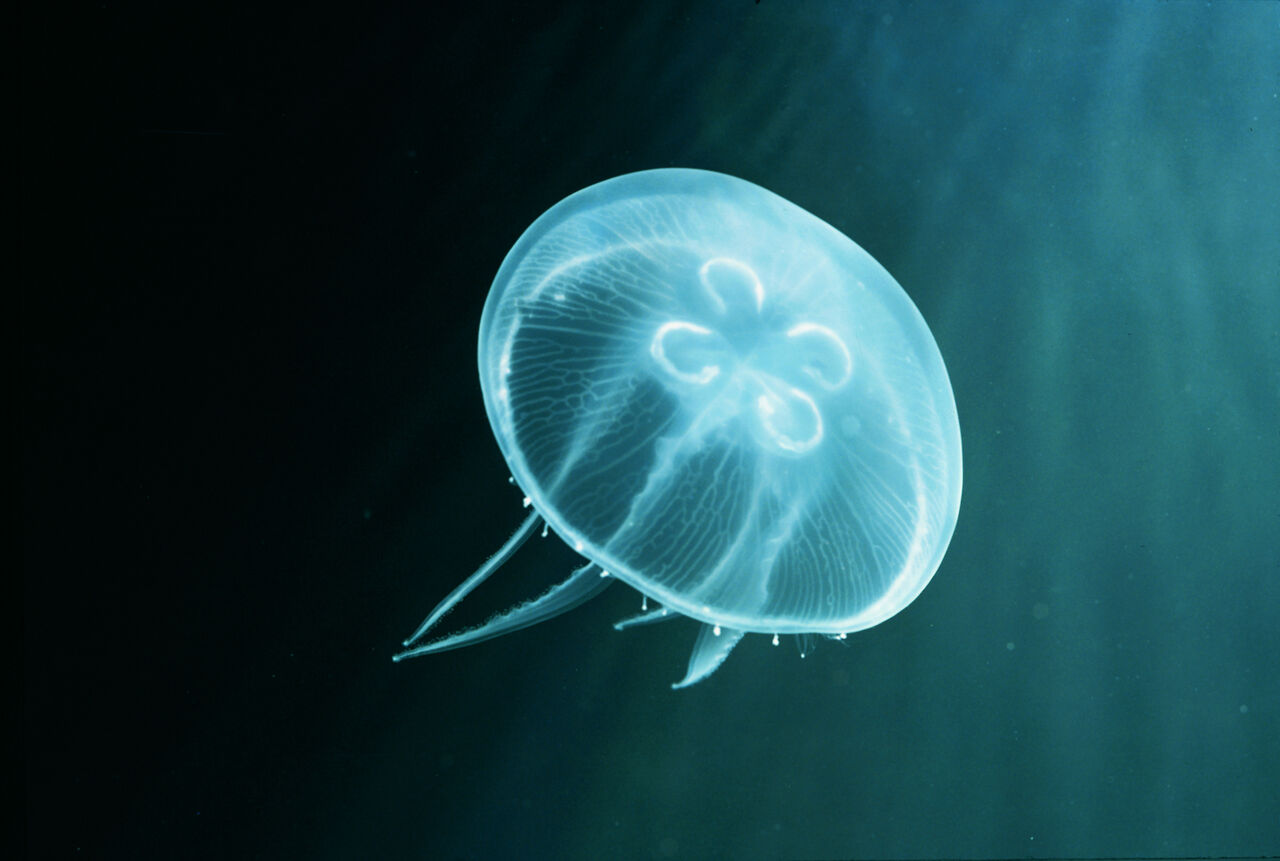Appearance and lifestyle:
Named for their ghostly, transparent bells, moon jellies (Aurelia aurita) have short tentacles that are armed with stinging cells or nematocysts. Fortunately, their sting is not as toxic as that of other jellies. There are many variations of this species, and new ones are still being added. Moon jellies can grow to between 25 and 40cm in size. Look closely - those four horseshoe-shaped structures you see in the bell of the moon jelly are the jelly's gonads. They are one of the easiest jelly species to grow and keep, making them popular in aquariums.
Although they are 95% water, moon jellies are the main diet of leatherback turtles and other marine creatures. Thousands of animals die every year from mistakenly swallowing drifting plastic bags which resemble gelatinous jellies.
Habitat:
Moon jellies are one of the most widespread jelly species in the world and are found throughout most of the world’s oceans.
Diet:
They eat plankton, fish eggs and baby crustaceans.
Threats:
Some of the threats faced by moon jellies are pollution, overfishing and climate change.
